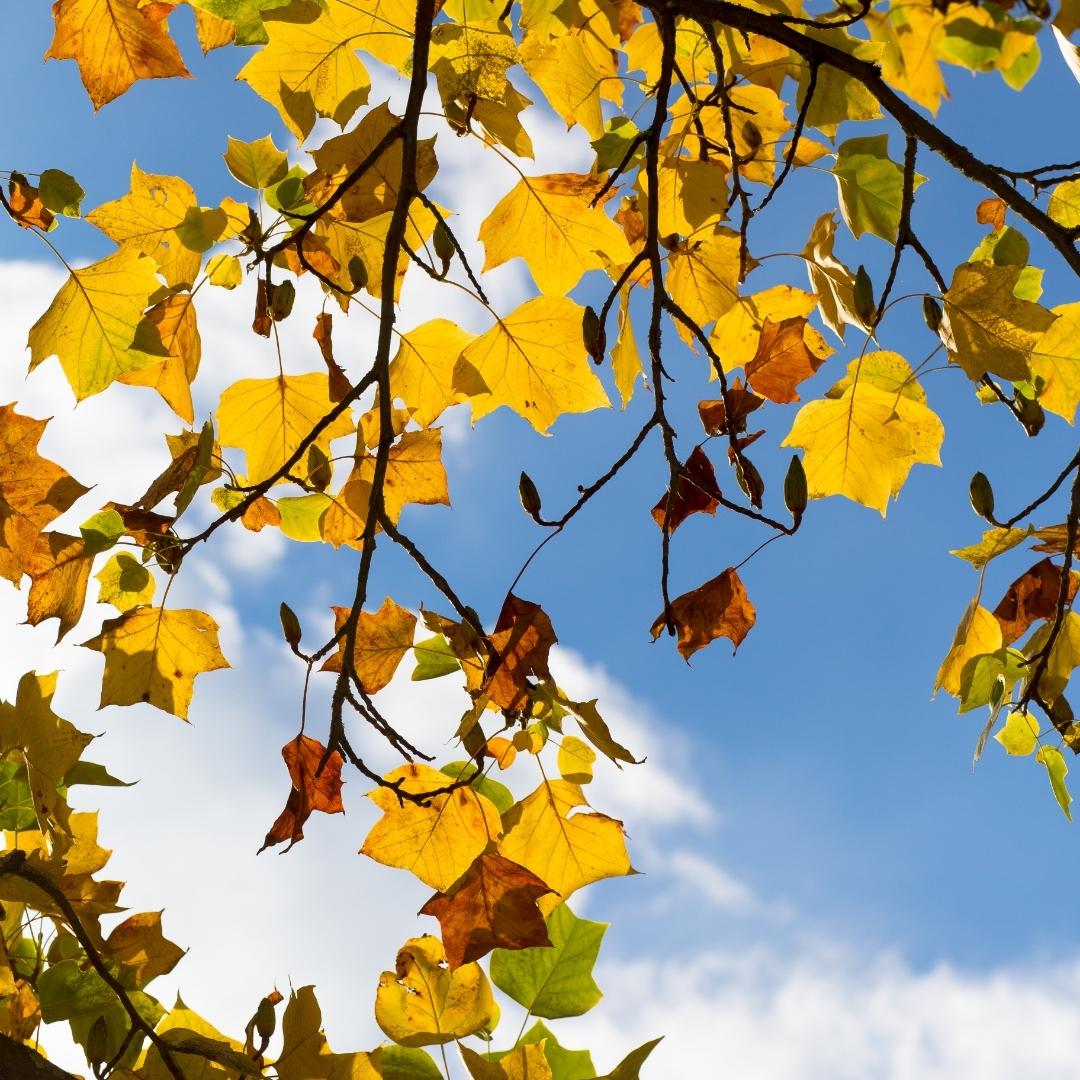Blog
A Popular Native Tree

A story by Sydney Wissmann. This article is also featured in the October 18 2023, Now in Nature.
One of the most picturesque spots at the Nature Center isn't very far off the trails—in fact, it's just a few steps off the paved drive. At the picnic tables near Fernwood Shelter, visitors can take in the tranquility of Ben's Pond and the gentle breeze weaving through the woods, all the while shaded by a lovely tulip poplar (Liriodendron tulipifera). This tree has caught my eye recently as it begins to lose its leaves, blanketing the ground in crunchy leaves shaded a resplendent yellow.
Undoubtedly, the tulip poplar is one of the most unique species to grace our local forests. One of the most fascinating aspects can be inferred from its name—the flowers, which are reminiscent of tulips. These flowers are some of the most conspicuous of all native trees, glowing orange and yellow in the late spring. Furthermore, its massive leaves are also shaped like tulips. Few trees can boast that both their flowers and leaves remind people of a completely different plant! Although their fall color may be easy to overlook when compared to the brilliant red of oaks or blazing orange of maples, its other common name, the yellow poplar, reminds you that its foliage is not to be forgotten come autumn.
The other half of the tulip poplar or yellow poplar's name, however, is not quite accurate. Its genus is Liriodendron, meaning that it is not technically a poplar (genus Populus). Those familiar with the extravagance of magnolia blooms will find it unsurprising that tulip poplars and their showy flowers belong instead in the magnolia family. Like many magnolias, Liriodendron tulipifera is a good tree for the cultivated landscape. Its larger cultivars would make an ideal shade tree in a large backyard, while smaller cultivars such as 'Little Volunteer' could suit more limited spaces.
Centuries ago, this tree would have been cut for lumber and canoes, but at the Nature Center, tulip poplars can be found just about anywhere, hiding in plain sight among better known tree species. Take a moment to enjoy these unique and colorful trees, or even better, enjoy an autumn picnic underneath its shade.
Sources: